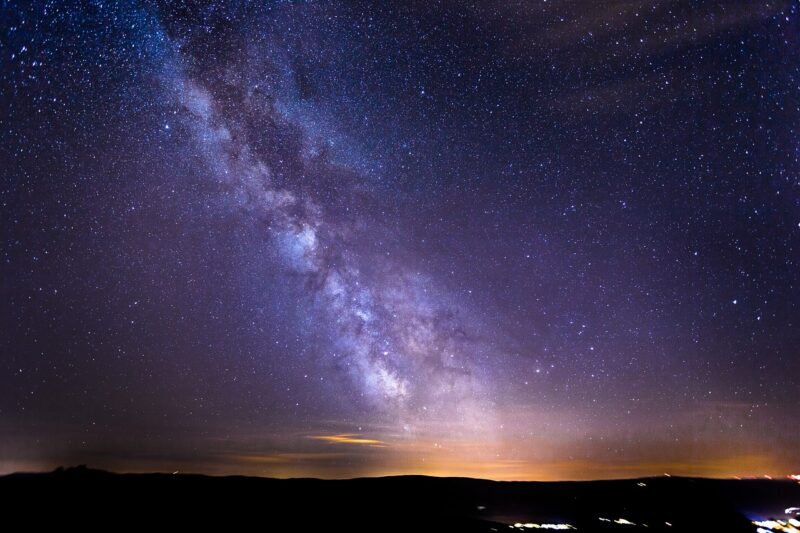Why the Stars Have Been Both Feared and Celebrated in Human History as Guides, Gods, and Symbols
November 17, 2024

Throughout history, the stars have captivated human imagination with their glimmering allure and enigmatic presence in the night sky. From ancient civilizations that revered them as gods to modern astronomers utilizing them to navigate the universe, the stars have held profound significance in shaping cultures, religions, and even scientific advancements. In this article, we will explore the dual nature of the stars as both revered symbols of guidance and fearsome representations of the unknown.
1. Ancient Civilizations and the Stars
Long before the invention of telescopes or modern astronomy, ancient civilizations looked up to the night sky and attempted to make sense of it. Cultures around the world have had a long-standing relationship with the stars, often ascribing them divine qualities. For instance:
- Babylonian Astronomy: The Babylonians used the stars to develop one of the earliest compelling systems of astronomy and astrology, which governed their daily life and decision-making. Divination through star patterns was a common practice.
- Egyptian Stargazing: The Egyptians aligned their pyramid structures with the stars and worshipped the goddess Nut, the sky goddess, believing she was the vault of the heavens beneath which the stars resided.
- Greek Mythology: In Greek mythology, stars were often associated with gods and formed constellations that told stories, such as Orion the Hunter and Cassiopeia, the queen known for her beauty and vanity.
These examples underscore how the stars were intertwined with the cultural and spiritual frameworks of societies. They served as both navigational tools and symbols of divine communication, illustrating the human desire to connect with the cosmos.
2. The Fear of the Stars: Cosmic Influences and Superstitions
While stars have often been celebrated, they have also instilled fear and uncertainty in humanity. With their vastness, they evoke a sense of awe and insignificance. Superstitions and taboos related to stars are prevalent in various cultures. Some fears include:
- Astral Alignment and Fate: Many cultures believed that star alignments could influence fate. For instance, the position of stars at birth was thought to dictate an individual’s destiny, leading to fears surrounding astrological predictions.
- Natural Disasters and Omens: Eclipses, comets, and meteor showers were often interpreted as omens of impending doom, regarded as signals from the heavens urging caution and reverence.
- Star-Gazing and Madness: The mesmerizing beauty of the stars has also led to tales of madness. Many cultures warned against excessive star-gazing, suggesting it could lead to insanity or obsessive behavior.
Such beliefs illustrate how the unpredictability and mysteries of the cosmos can provoke fear while simultaneously encouraging wonder.
3. Stars as Guides: Navigational Helpers
Stars have played a crucial role in navigation throughout history. Ancient mariners relied on constellations to traverse vast oceans long before GPS technology existed. Consider:
- Polaris, The North Star: Known for its fixed position, Polaris has been a vital guide for travelers in the Northern Hemisphere, signaling true north and aiding countless explorers on their journeys.
- Wanderers of the Sea: Various civilizations, including the Polynesians, expertly navigated the vast Pacific using stellar bodies, analyzing the rise and set of celestial bodies to guide their way home.
- The Arabian Nights and Astronomical Charts: Arab astronomers advanced star charts and navigation techniques, further enhancing explorers’ understanding of the stars and their applications in navigation.
The practical application of stars as navigational guides demonstrates their impact on exploration and human migration throughout history.
4. Stars in Religion: Symbols of Faith
The stars have transcended their physical existence to embody religious and spiritual meanings. They often symbolize hope, guidance, and the divine. Prominent examples include:
- Star of Bethlehem: In Christianity, the Star of Bethlehem signified guidance and enlightenment, leading the Wise Men to the birthplace of Jesus. This symbol embodies faith and divine guidance.
- Zodiac Signs and Spiritual Guidance: Astrology, prevalent in many cultures, employs stars as symbols of personality, guiding individuals’ lives through divine communication.
- African Star Worship: Various African cultures worshipped stars such as the Dogon tribe, which revered certain constellations believing they represented deities that influenced human lives.
Stars act as enduring symbols across religions, reinforcing humanity’s intrinsic desire for connection to the universe and its mysteries.
5. Modern Science and the Stars: Knowledge through Exploration
With the advent of modern science and technology, the stars have become subjects of rigorous study. Innovations in telescopes and space exploration have revolutionized our understanding of the cosmos:
- Hubble Space Telescope: Launched in 1990, Hubble has provided breathtaking images of galaxies, nebulae, and celestial phenomena, revealing the vastness of the universe and our place within it.
- Astrobiology and Exoplanet Discovery: The search for extraterrestrial life hinges on studying stars beyond our solar system, as scientists explore planets that could harbor life in habitable zones around distant stars.
- Public Outreach and Stargazing Culture: The rise of astronomy clubs and planetarium visits embodies a modern-day celebration of the stars, uniting people in awe of the universe’s wonders.
Thus, the stars continue to inspire curiosity and contribute to scientific advancements that deepen our knowledge of the universe’s workings.
Conclusion: A Dual Legacy of Awe and Fear
From ancient deities worshipped in awe to significant navigational beacons and objects of study for modern astronomers, the stars symbolize humanity’s complex relationship with the cosmos. They serve as reminders of our place in the universe—offering guidance, fueling our imaginations, and evoking the mysteries that lie beyond our reach. Whether feared or celebrated, stars have had an enduring impact on human cultures and will continue to illuminate our understanding of the cosmos for generations to come.
By reflecting on this dual legacy, we can appreciate the symbol of hope and fear that stars embody, both as guides navigating the vast unknown and as luminous pointers urging us to probe the depths of curiosity and wonder about existence itself.






